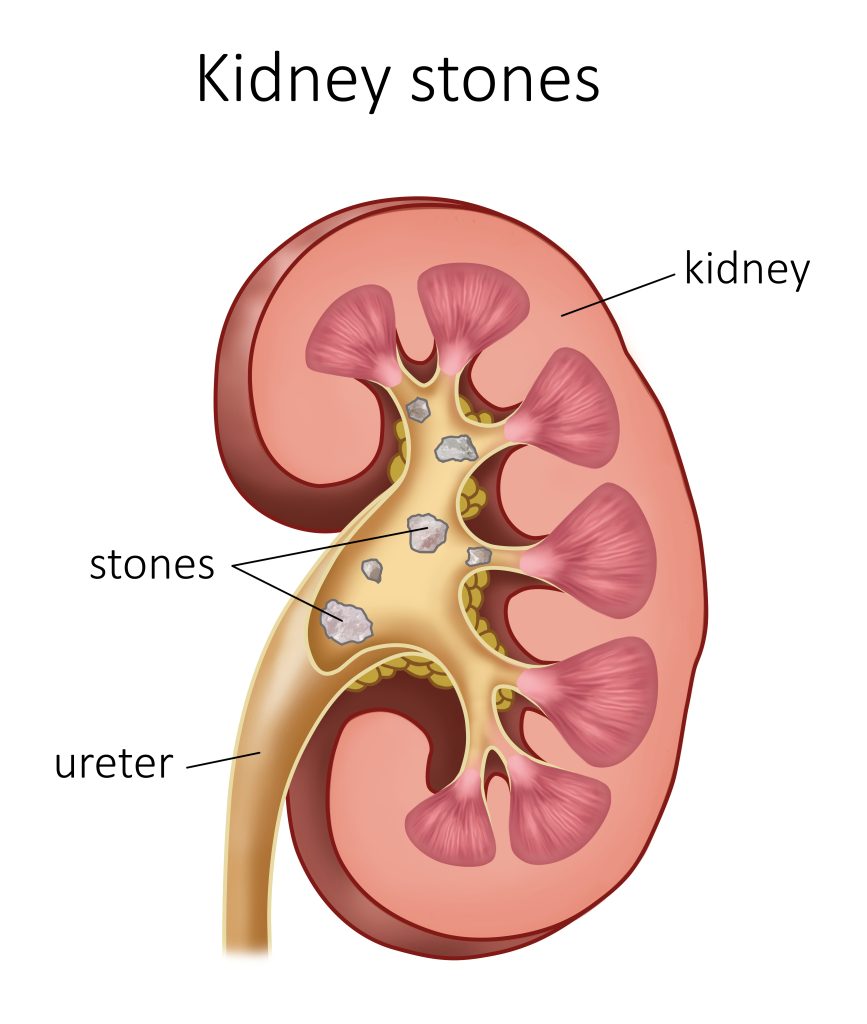Semi-rigid ureteroscopy is a well-known procedure used for varying urological conditions, with high success rates. It is suggested in the following cases:
- When a stone in the distal third of the ureter does not spontaneously get expelled because it is larger than 6 mm
- Severe pain (the stone is not advancing)
- Infection or obstruction of a single kidney


How is a semi-rigide ureteroscopy performed?
It is an endoscopic surgery.
This procedure involves introducing into the ureter, and sometimes to the pelvis of the kidney, a semi-rigide device with a lens called a semi-rigide ureteroscope.
This 5 mm diameter optical instrument is connected to a light source, a sterile water irrigation tubing and a camera. It also contains a working channel through which various instruments are introduced, such as guides wires, laser fibers and basket probes.
The procedure is performed under spinal anesthesia, in day surgery without hospitalization.
It is rarely necessary to dilate the ureter to penetrate more easily with the device. When the calculation is removed or fragmented, it is necessary to leave in place in the ureter a double J probe which avoids postoperative pain. This facilitates the elimination of any computational debris.
The higher is the stone, the more difficult is the procedure. The procedure sometimes requires a flexible ureteroscope or a second intervention, administered after preparing the ureter by placing a double J probe to cause progressive dilatation.
This procedure involves introducing into the ureter, and sometimes to the pelvis of the kidney, a semi-rigide device with a lens called a semi-rigide ureteroscope.
This 5 mm diameter optical instrument is connected to a light source, a sterile water irrigation tubing and a camera. It also contains a working channel through which various instruments are introduced, such as guides wires, laser fibers and basket probes.
The procedure is performed under spinal anesthesia, in day surgery without hospitalization.
It is rarely necessary to dilate the ureter to penetrate more easily with the device. When the calculation is removed or fragmented, it is necessary to leave in place in the ureter a double J probe which avoids postoperative pain. This facilitates the elimination of any computational debris.
The higher is the stone, the more difficult is the procedure. The procedure sometimes requires a flexible ureteroscope or a second intervention, administered after preparing the ureter by placing a double J probe to cause progressive dilatation.
What are the risks and possible complications of a semi-rigid ureteroscopy?
Risks and possible complications are very rare (1 to 2% of cases). In cases where bleeding, narrowing of the ureter secondary to the procedure and perforations of the ureter can occur, these complications are usually simple to treat with a double J probe for a prolonged duration.
The most common difficulty (10%) is the failure of progression in the ureter, caused by too narrow ureteral size. This is why the need for several operating times is always considered in cases where the ureter is not prepared beforehand by a double catheter J or if the stone to be treated is too big. To avoid the risk of trauma, a double J is temporarily installed so that the ureter expands on it. It is then necessary to postpone the intervention and to re-intervene a few weeks later.
The discomforts secondary to double J are common. An infection or sepsis is possible despite sterile urine and preoperative antibiotic prophylaxis. They can occur quickly the same day or late.
The most common difficulty (10%) is the failure of progression in the ureter, caused by too narrow ureteral size. This is why the need for several operating times is always considered in cases where the ureter is not prepared beforehand by a double catheter J or if the stone to be treated is too big. To avoid the risk of trauma, a double J is temporarily installed so that the ureter expands on it. It is then necessary to postpone the intervention and to re-intervene a few weeks later.
The discomforts secondary to double J are common. An infection or sepsis is possible despite sterile urine and preoperative antibiotic prophylaxis. They can occur quickly the same day or late.
Where is the surgery done?
Surgeries are performed in the only accredited private hospital in Quebec, at the Centre Métropolitain de Chirurgie.


